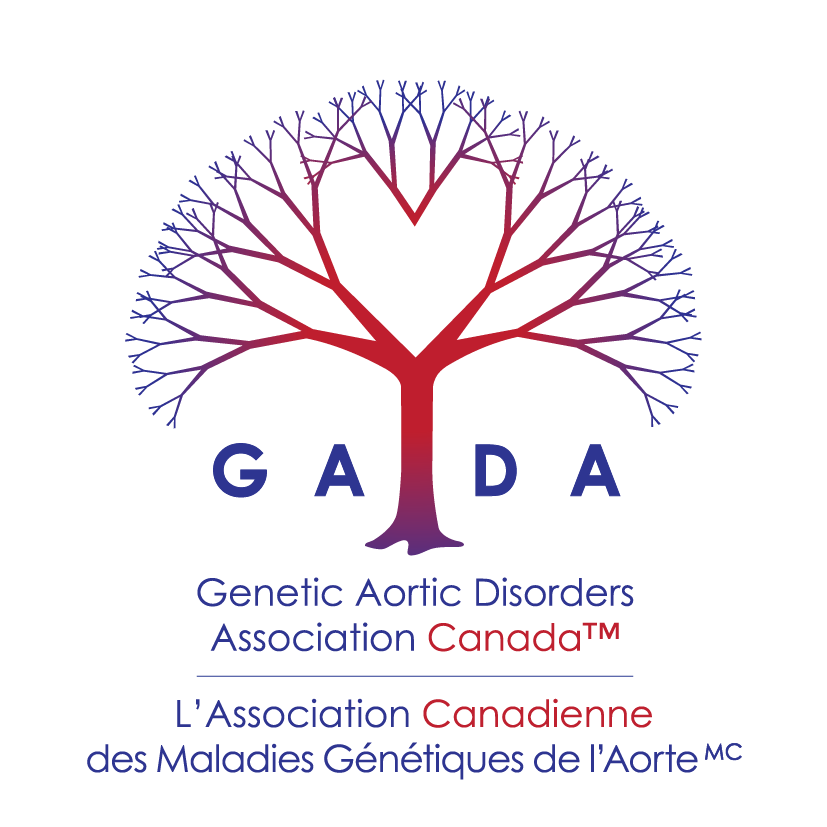2019 AWARD 2:
Clinical and Genetic Determinants of Peripartum Thoracic Aortic Dissection
$50,000 1-year grant
Funded by GADA Canada & the Temerty Foundation
January 2020 - December 2020
Alana C Cecchi, MS, CGC (Co-PI)
Rana Afifi, MD (Co-PI)
Assistant Professors, University of Texas Health Science Center at Houston, Houston, TX.
LAY SUMMARY:
Thoracic aortic aneurysm, or an enlargement of the aorta, predisposes to acute aortic dissections, which are a life-threatening medical event. Importantly, deaths due to thoracic aortic dissection (TAD) can be prevented if at-risk individuals are identified and treated early in the disease process. The standard treatment for TAD is surgical repair of the aortic aneurysm once it reaches a certain size, before dissections occurs. However, surgical repair to prevent dissection is dependent on identifying individuals at risk for dissection by screening or imaging the aorta.
It is known that up to 20% of individuals with thoracic aortic aneurysms and dissections have a genetic predisposition to the disease. To date, 11 genes have been found to be associated with a heritable form of thoracic aortic disease (HTAD). Individuals found to carry a genetic variant or alteration associated with HTAD are managed according to the underlying gene, which may signify an increased risk for premature dissection and prompt surgery at smaller aortic diameters to prevent premature death.
Pregnancy is another factor that increases the risk for TAD. TAD occurring during pregnancy or in the postpartum period is life threatening to not only the mother, but also the fetus. Current surgical guidelines may not be applicable to women at risk for pregnancy-related dissections. If clinical markers, such as breast feeding, family history, and genetic alterations are observed in women with history of pregnancy-related dissection, healthcare providers could use this information to improve early identification.
The purpose of this study is to describe the medical complications and risk factors associated with TAD during and after pregnancy to develop medical guidelines such that survival can be improved. We propose to assess family history, genetic alterations, aortic disease status, risk factors (e.g. breast-feeding or medication use) that may alter complication rates, and look for other factors affecting maternal and fetal survival.
Because pregnancy-related dissections are a rare event, we plan to collaborate with researchers who are a part of several international registries including the Montalcino Aortic Consortium, the International Registry for Acute Aortic Dissections, and the GenTAC Alliance to recruit research participants. We also have an established partnership with patient advocacy organizations focused on thoracic aortic disease and pregnancy-related dissections who have agreed to publicize the study. Finally, we will be utilizing our own network at the University of Texas Health Science Center at Houston and affiliate hospitals to recruit additional cases for this study.
Information produced by this study will be used to start a North American registry for peripartum dissection cases and generate data to develop medical management and treatment guidelines for women at risk for pregnancy-related aortic dissections.
